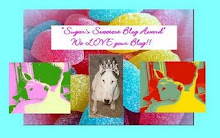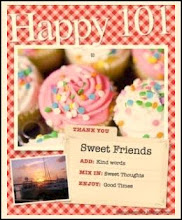In the meantime, I thought I would refresh everyones memory about recycling symbols. These symbols are typically found on the bottom of products, so please look for them and take the appropriate action.
 Number 1 Plastics - PET or PETE (polyethylene terephthalate) This is found in so many products that you probably use a number 1 plastic container every day. Soft drink bottle, mouthwash bottle, peanut butter containers, salad dressing and vegetable oil containers, and even ovenable food trays are made from this plastic. Commonly used for single-use beverages due to being inexpensive, lightweight, and easy to recycle, it poses a low risk of leaching breakdown products.
Number 1 Plastics - PET or PETE (polyethylene terephthalate) This is found in so many products that you probably use a number 1 plastic container every day. Soft drink bottle, mouthwash bottle, peanut butter containers, salad dressing and vegetable oil containers, and even ovenable food trays are made from this plastic. Commonly used for single-use beverages due to being inexpensive, lightweight, and easy to recycle, it poses a low risk of leaching breakdown products. This plastic can be recycled into so many things that it is a wonder that more manufacturers do not use more post-consumer waste plastic. Polar fleece (like REI), fiber, tote bags, furniture, carpet, paneling, and occasionally new PET containers can be made from this type of plastic.
The good news is that this plastic is picked up through most curbside recycling programs. So if this plastic can be recycled pretty easily, why are recycling rates for it low - around 20%?

Number 2 Plastics - HDPE (high density polyethylene)
This is another plastic that is found everywhere. It is found in milk jugs, juice bottles, bleach bottles, detergent bottle, household cleaner bottles, shampoo bottles, some trash and shopping bags, motor oil bottles, and butter tubs. Whew! This is quite a list. HDPE is used a lot for packaging because it is so versatile. Thankfully, it carries a low risk for leaching and can be recycled into many products like laundry detergent bottles, oil bottles, pen, recycling containers, floor tile, picnic tables, fencing, and lumber.
The good news is that this type of plastic is picked up through most curbside recycling programs, though some only allow containers with necks. I wonder why this is. It must have something to do with sorting.
Number 3 Plastics - V (Vinyl) or PVC

This is another type of plastic that you probably use everyday. It is found in window cleaner and detergent bottle, shampoo bottles, cooking oil bottles, clear food packaging, wire jacketing, medical equipment, siding, and windows.
The good news is that it can be recycled into decks, paneling, mudflaps, roadway gutter, flooring, cables, speed bumps, and mats, but it is rarely recycled. Some plastic lumber makers will accept it, but they are few and far between. So what is the problem with PVC?
For all the good it does, like being tough and weathering well, it contains chlorine, so its manufacture can release dangerous dioxins. There are already enough dioxins and toxins in the atmosphere, so what can we do with it when it is no longer useful?
Most people will use something made of number 4 plastic every day. It is found in squeezable bottles, bread bags, frozen food bags, dry cleaning bags, shopping and tote bags, clothing, furniture, and carpeting.
This type of plastic can be recycled in trash can liners and cans, compost bins, shipping envelopes, paneling, lumber, landscaping ties, and floor tiles. As you can see, it is a flexible plastic that has many applications.
Hopefully your grocery store provides a container to recycle plastic shopping bags (not that you use them), but most curbside recycling programs do not accept LDPE. Some communities are starting to accept it, so let's hope that more communities got on board soon.
 This plastic is found in some yogurt containers, syrup bottles, ketchup bottles, caps, straws, and medicine bottles. As America ages, expect to see more of this plastic.
This plastic is found in some yogurt containers, syrup bottles, ketchup bottles, caps, straws, and medicine bottles. As America ages, expect to see more of this plastic.
Number 6 Plastics - PS (polystyrene)
Because polystyrene can be made into rigid or foam products, you may know it as Styrofoam. You may also know that it can leach potential toxins into foods when heated. There is so much Styrofoam in our waste stream that most environmentalists hate it because it is difficult to recycle, thus most of it ends up in landfills.
Number 7 Plastics - Miscellaneous
As always, if your local municipality does not have a recycling program for any of the above mentioned plastics, please visit http://www.earth911.org/ to find a recycler near you.
Information and images courtesy of www.thedailygreen.com.
Number 5 Plastics - PP (polypropylene)
 This plastic is found in some yogurt containers, syrup bottles, ketchup bottles, caps, straws, and medicine bottles. As America ages, expect to see more of this plastic.
This plastic is found in some yogurt containers, syrup bottles, ketchup bottles, caps, straws, and medicine bottles. As America ages, expect to see more of this plastic.It can be recycled into signal lights, battery cables, brooms, brushes, auto battery cases, ice scrapers, landscape borders, bicycle racks, rakes, pallets, and trays. It has a high melting point and is often chosen for containers that must accept hot liquid.
Some curbside recycling programs accept it and it is gradually becoming more accepted by recyclers. Lucky for us, Aveda has a cap recycling program, so don't forget to take your caps to an Aveda store near you.
Number 6 Plastics - PS (polystyrene)
This type of plastic is found in one of Mom's biggest problem item - egg
cartons. You should never buy eggs that come in polystyrene, in fact you should avoid this plastic as much as you can. It is found in disposable plates and cups (which you don't use), meat trays (which you shouldn't use), carry-out containers (another reason you should eat at home), aspirin bottles, and compact disc cases.
This plastic can be recycled into insulations, light switch plates, more egg cartons, vents, rulers, foam packing, and of course more carry-out containers.
This plastic can be recycled into insulations, light switch plates, more egg cartons, vents, rulers, foam packing, and of course more carry-out containers.
Some curbside recycling programs accept number 6 plastic and it is slowing gaining acceptance.
Because polystyrene can be made into rigid or foam products, you may know it as Styrofoam. You may also know that it can leach potential toxins into foods when heated. There is so much Styrofoam in our waste stream that most environmentalists hate it because it is difficult to recycle, thus most of it ends up in landfills.
Number 7 Plastics - Miscellaneous
It seems like there is a miscellaneous category in everything, doesn't it? If you own a computer like most people, then you touch number 7 plastic every day. It is also found in three and five gallon water bottles (which most people don't need), sunglasses (which everyone needs), DVD's, iPod cases, signs and displays, certain food containers, and nylon.
This plastic can be recycled into plastic lumber, but that's about it.
The bad news is that this type of plastic has not traditionally been recycled, though some curbside programs now take them.
It is important to note that a wide variety of plastic resins that don't fit into any other category are usually lumped into number 7, and only a few are made from plants (polyactide) and are compostable. Polycarbonate, which has been in the headlines a lot lately, is number 7, and is the hard plastic that can leach potential hormone disruptors.
As always, if your local municipality does not have a recycling program for any of the above mentioned plastics, please visit http://www.earth911.org/ to find a recycler near you.
Information and images courtesy of www.thedailygreen.com.












No comments:
Post a Comment